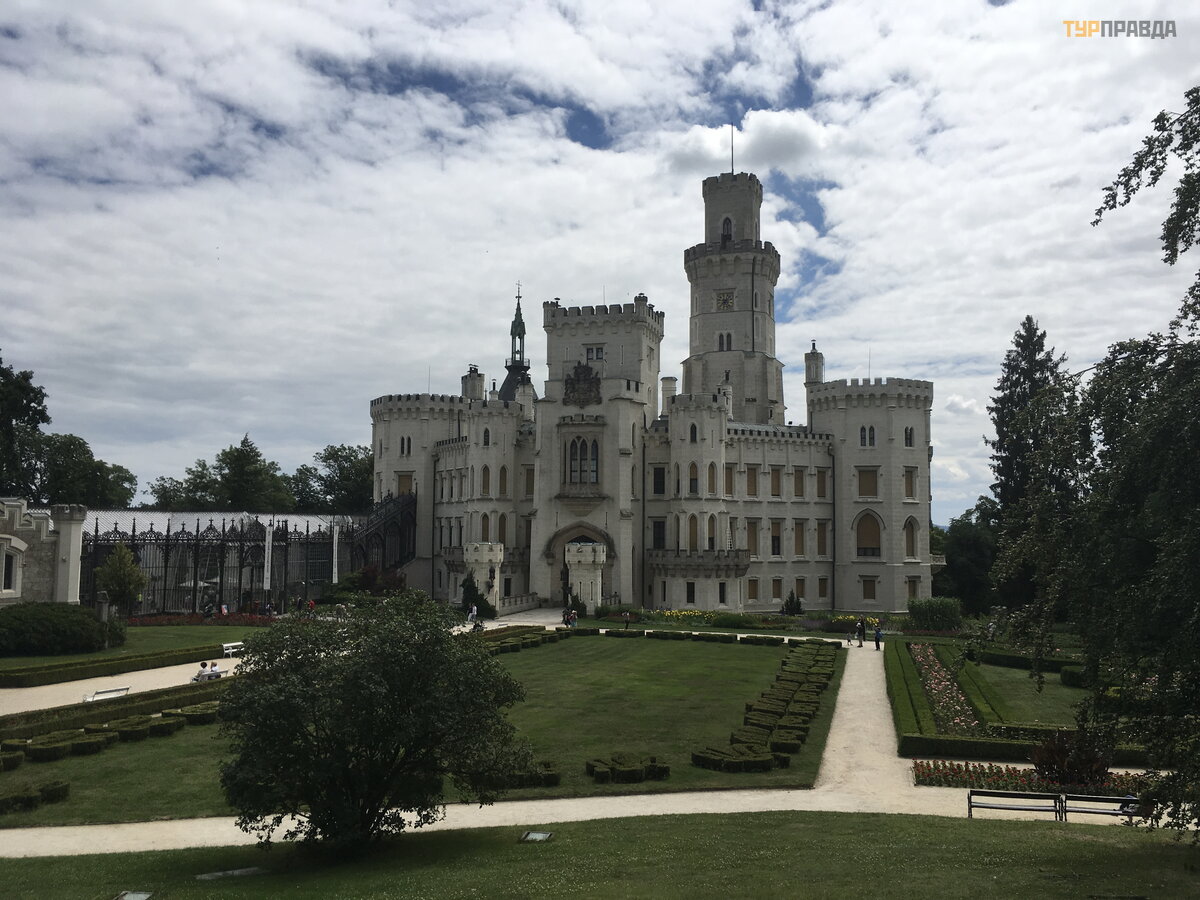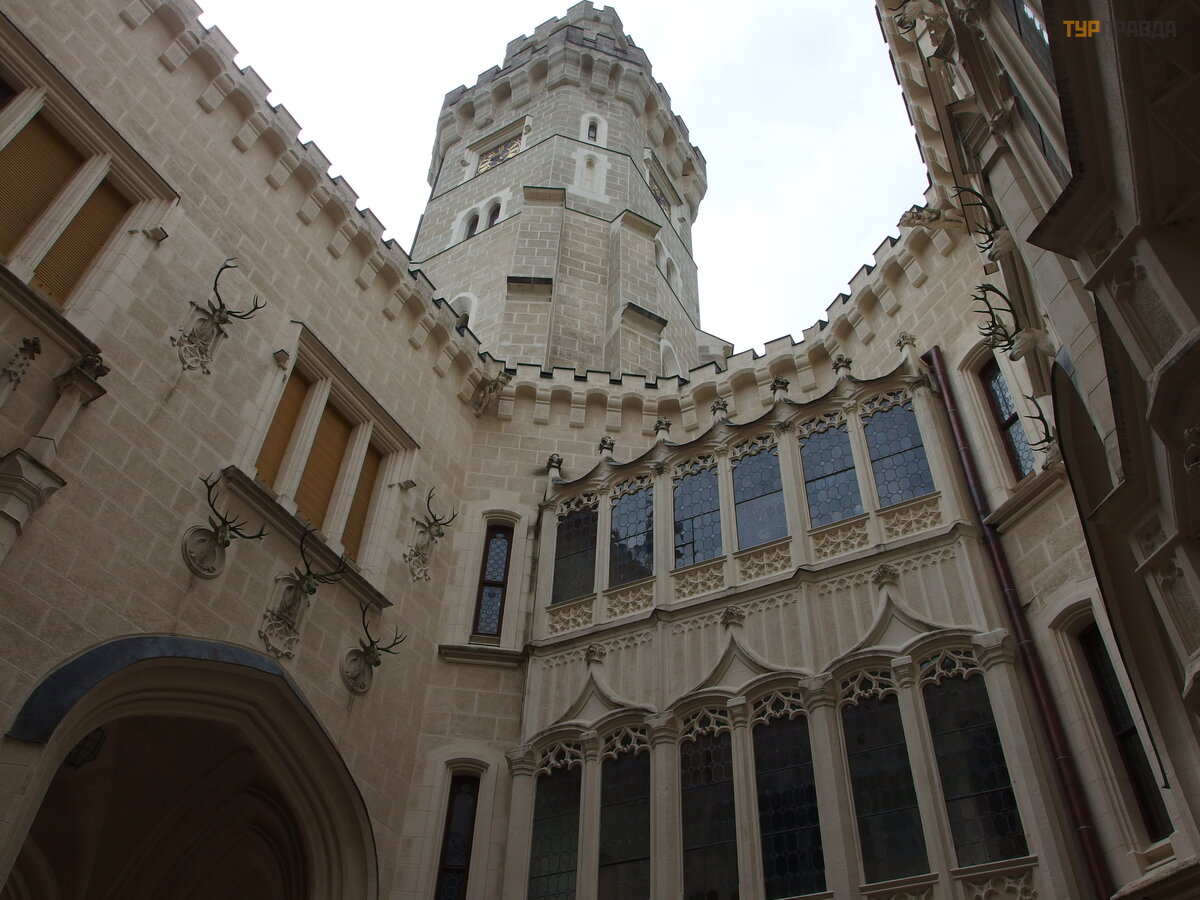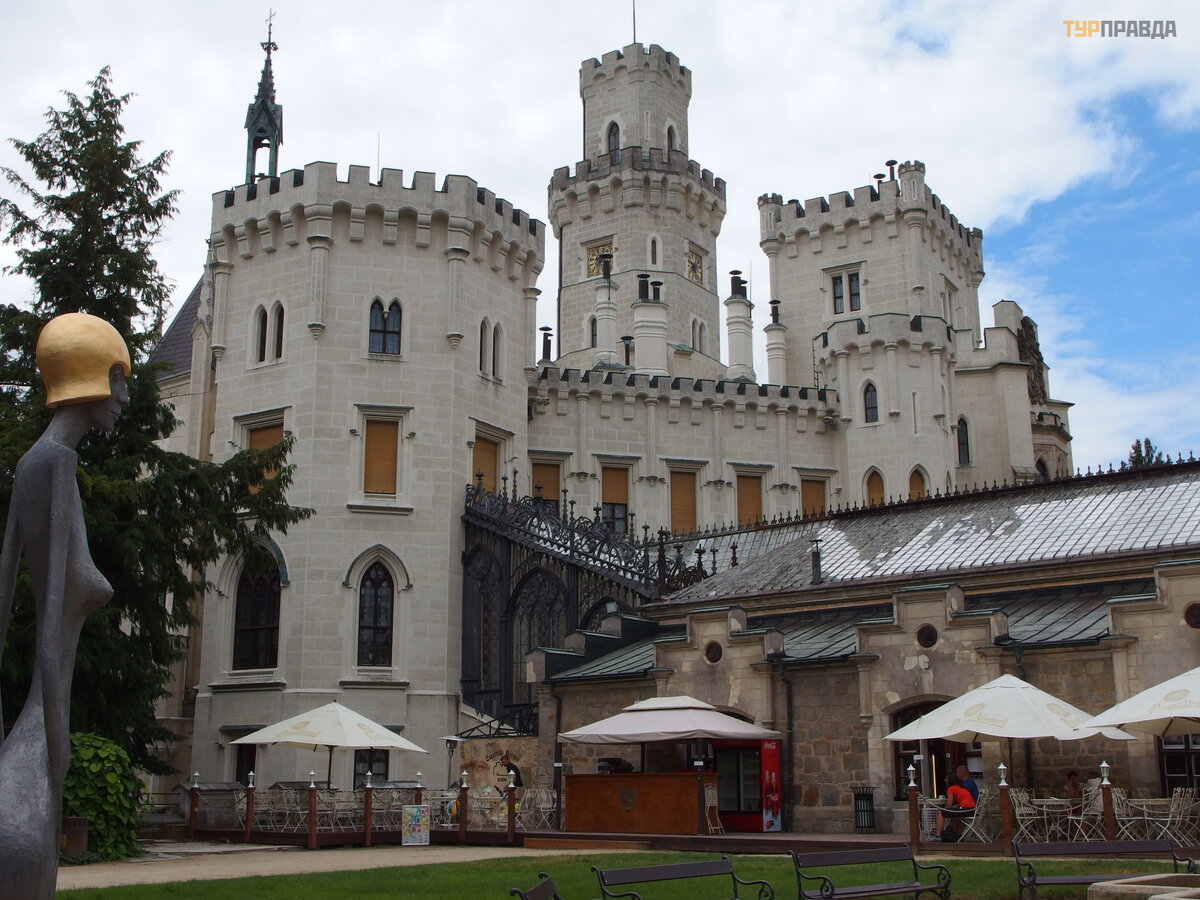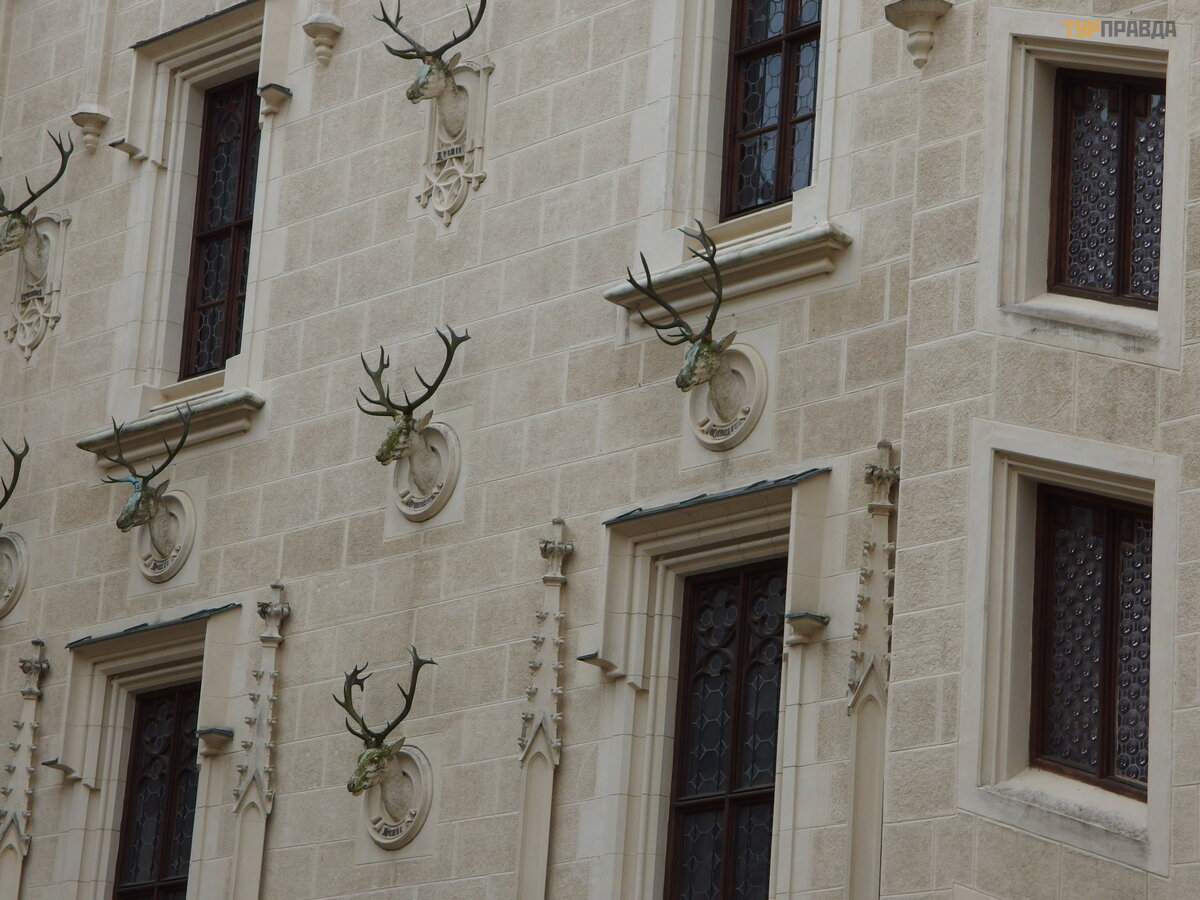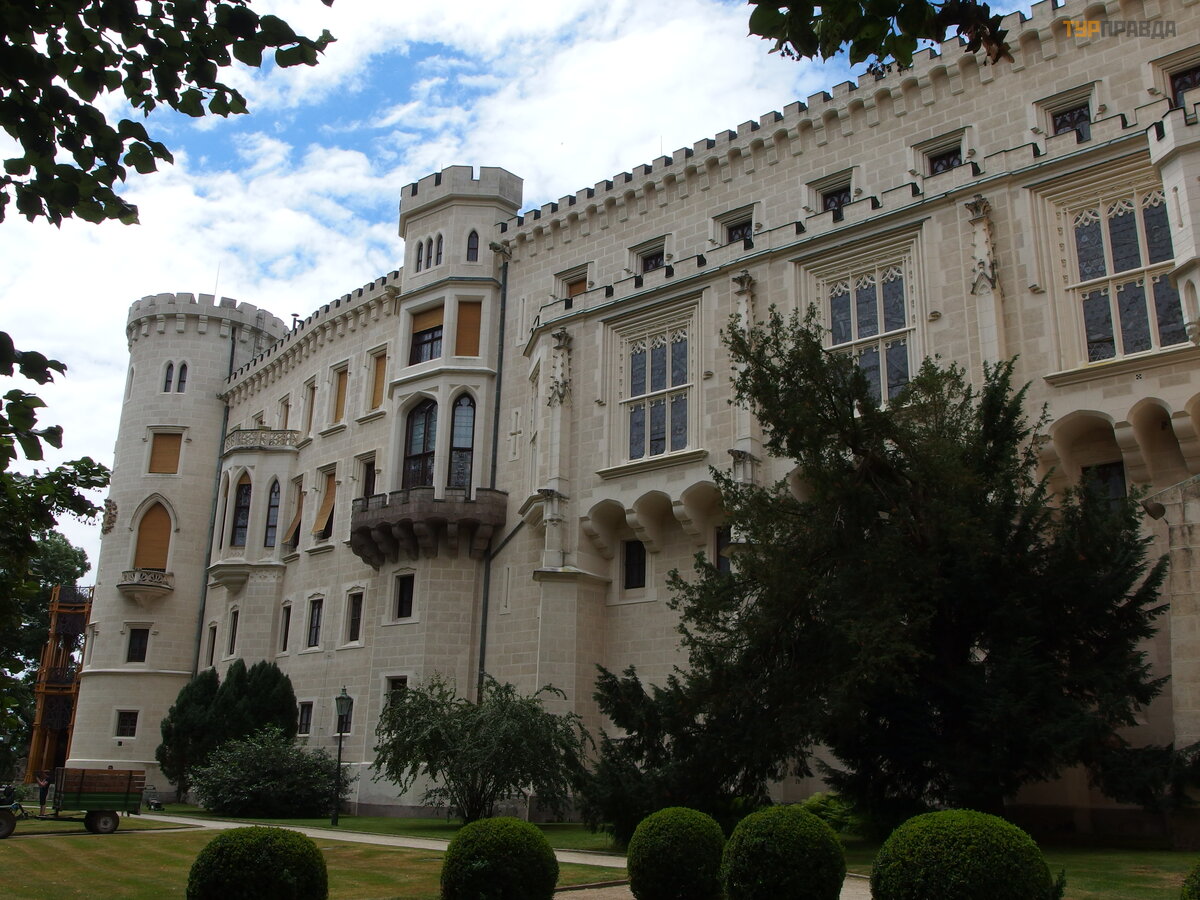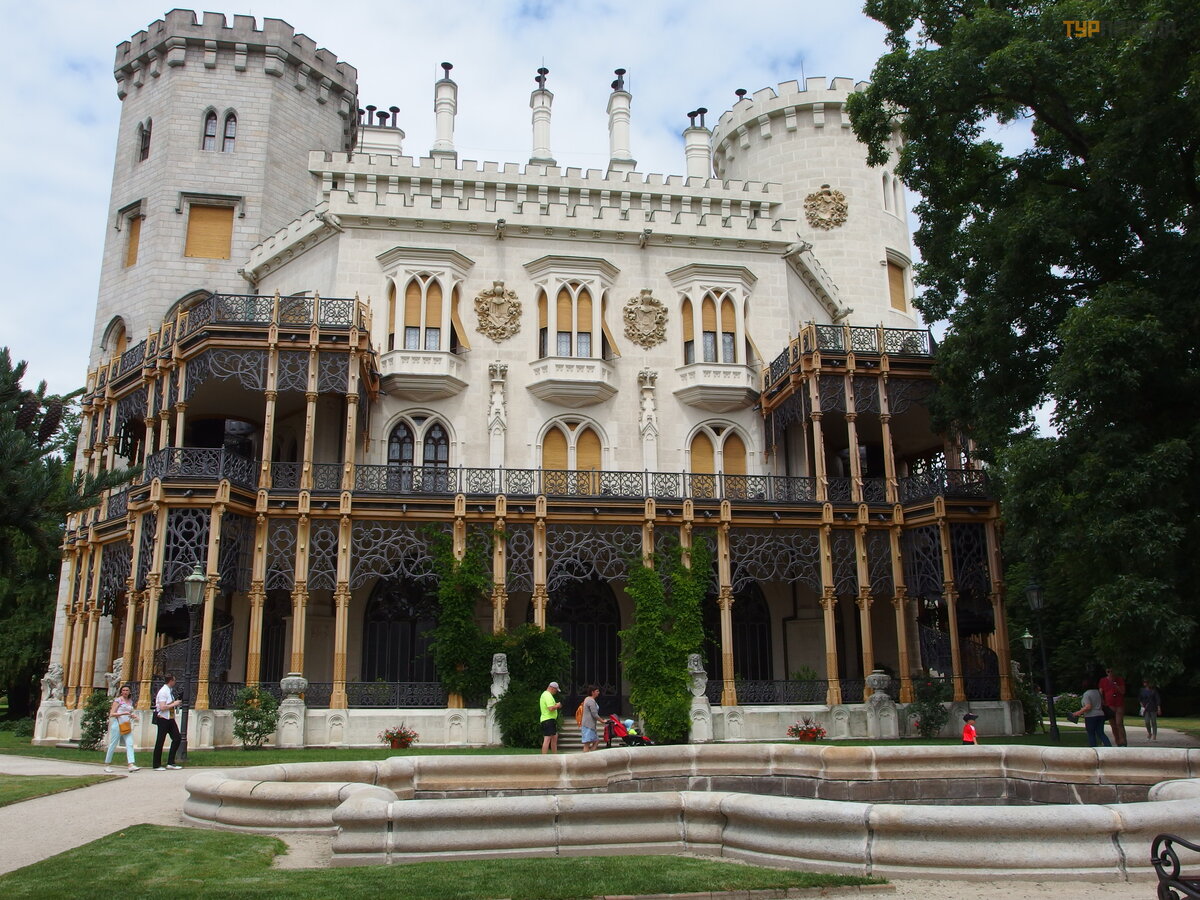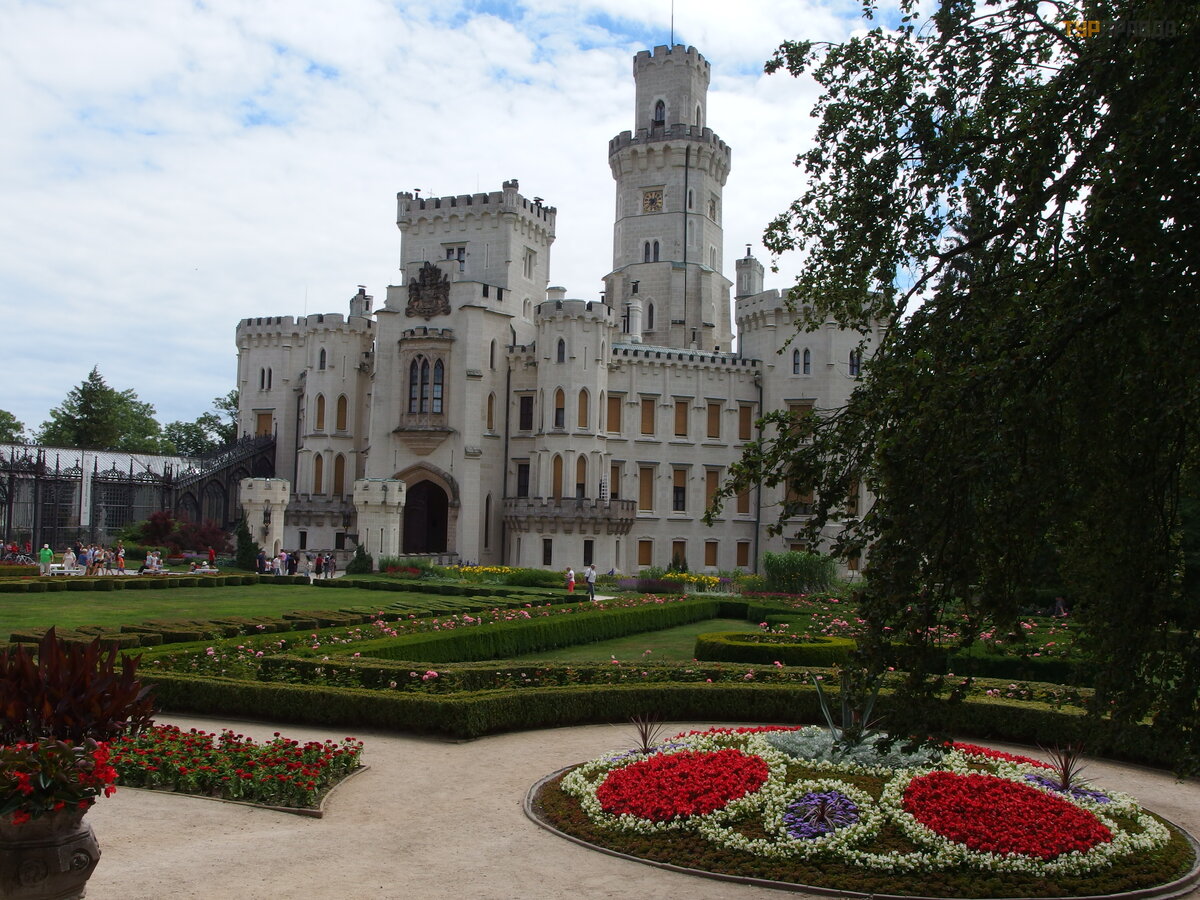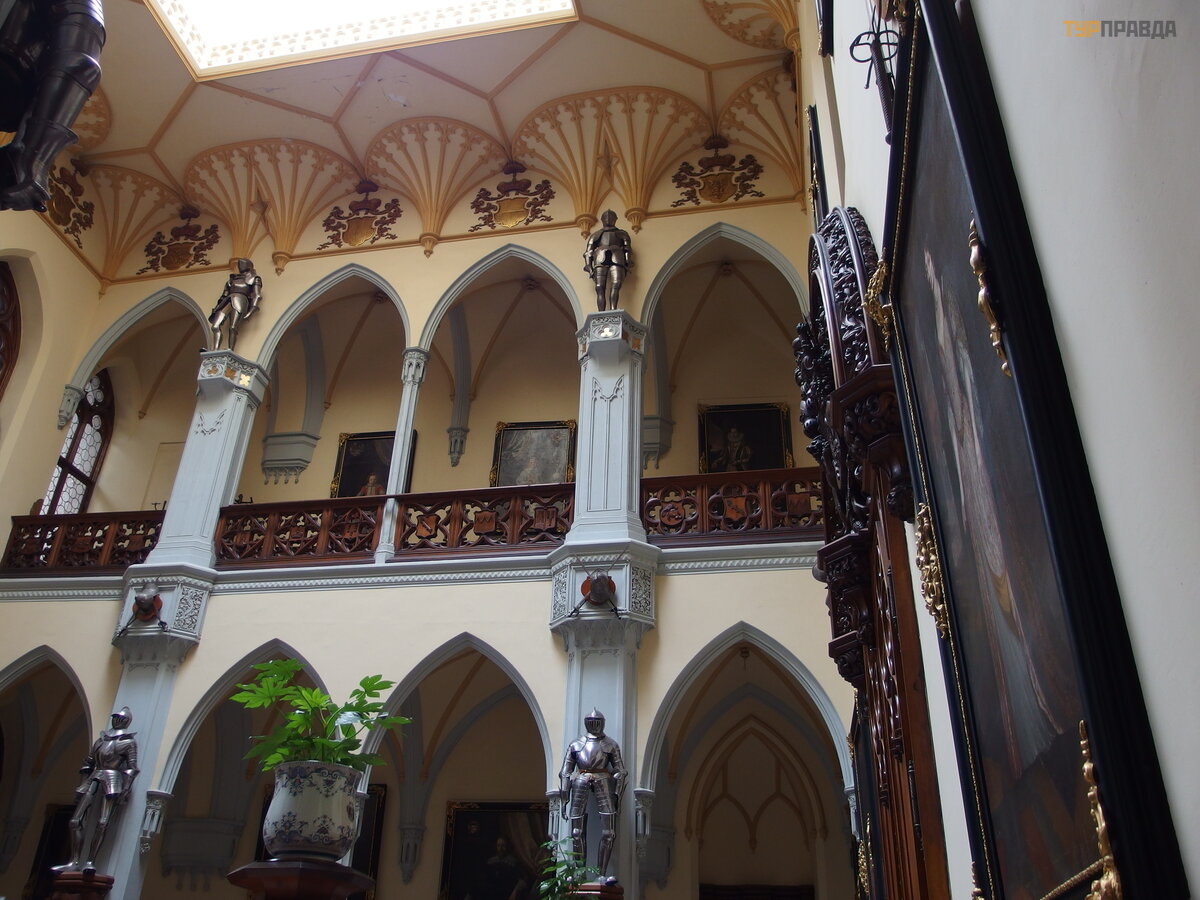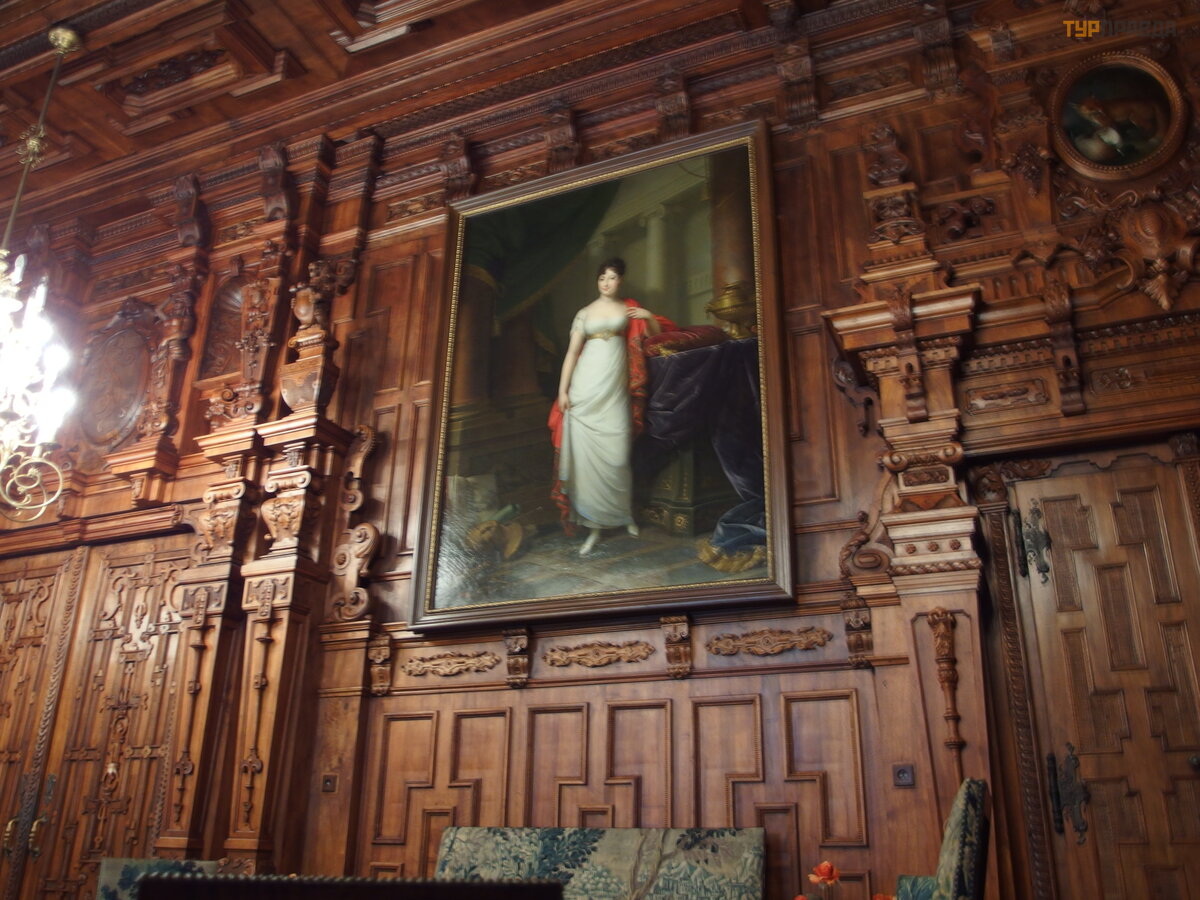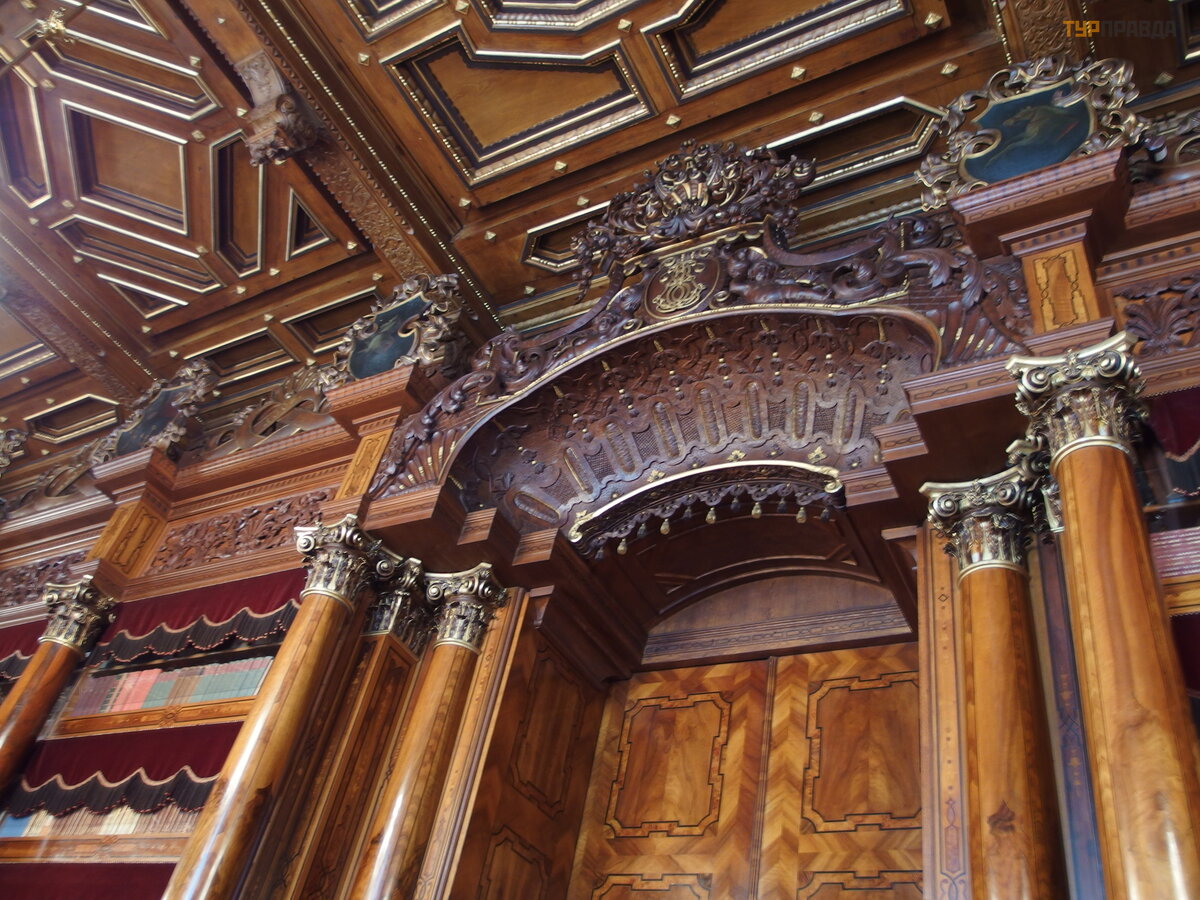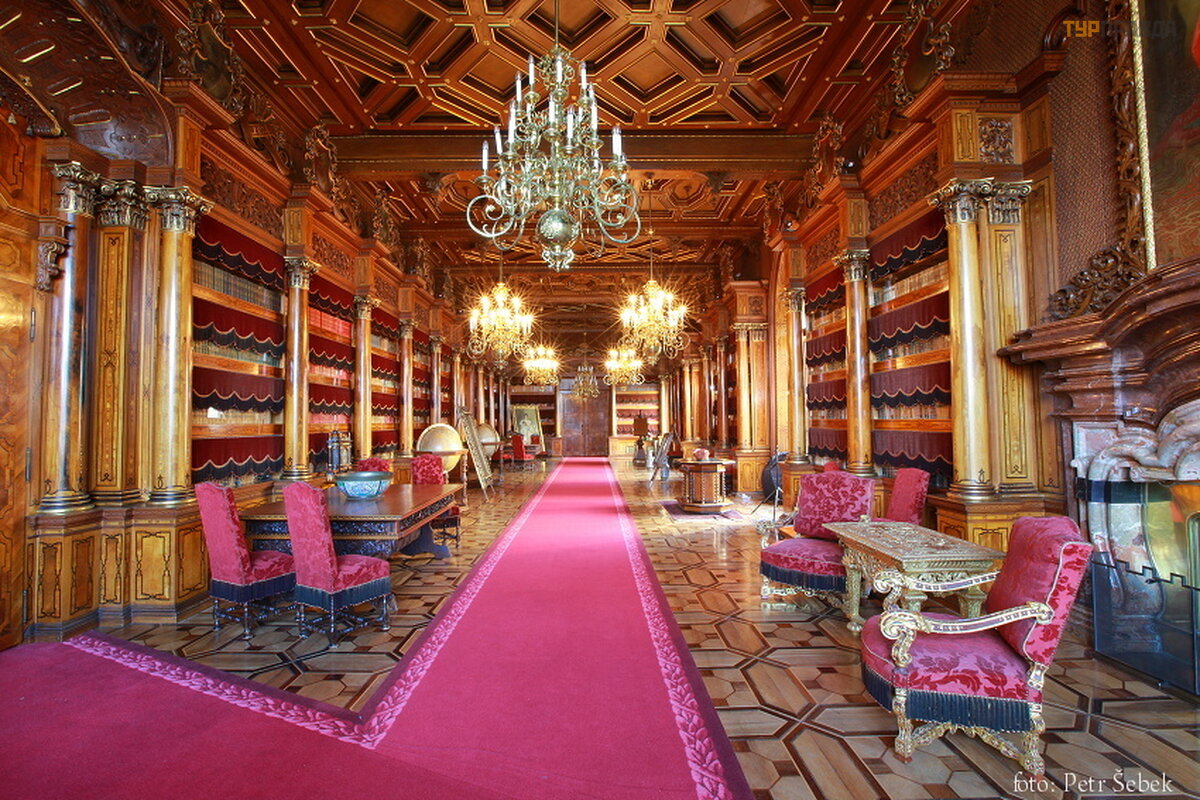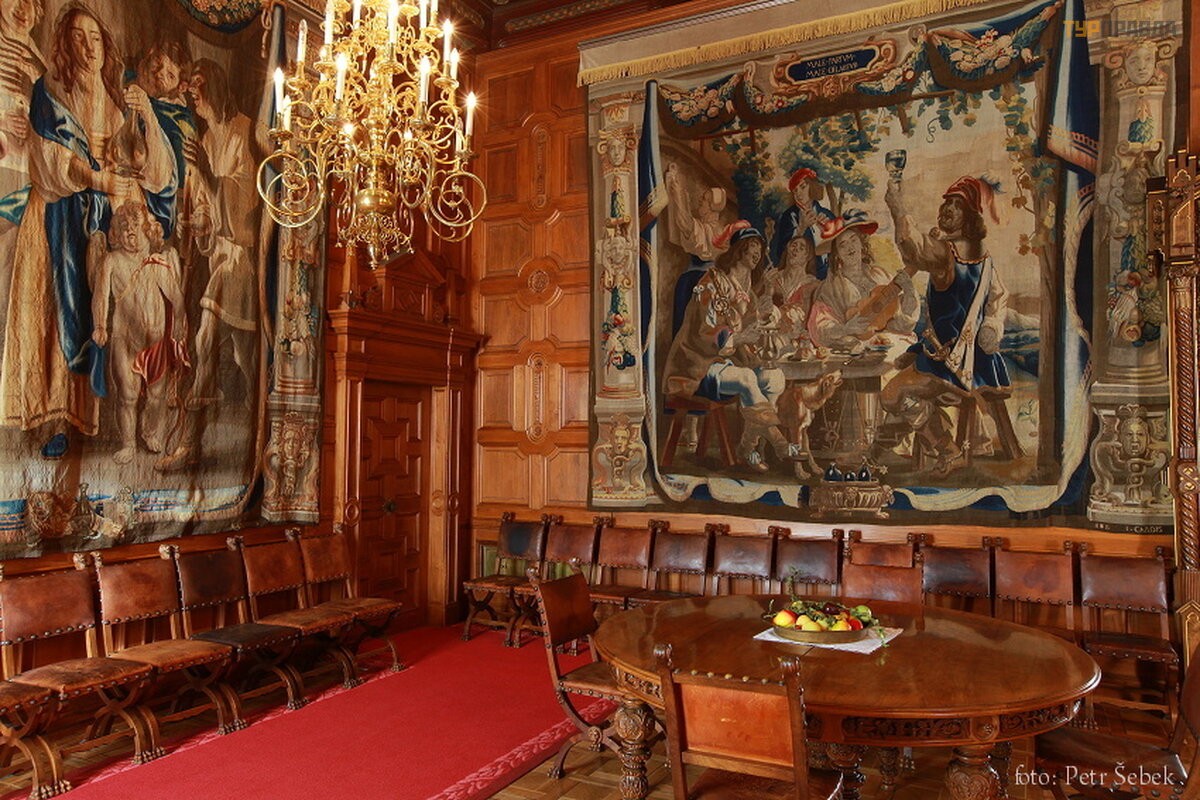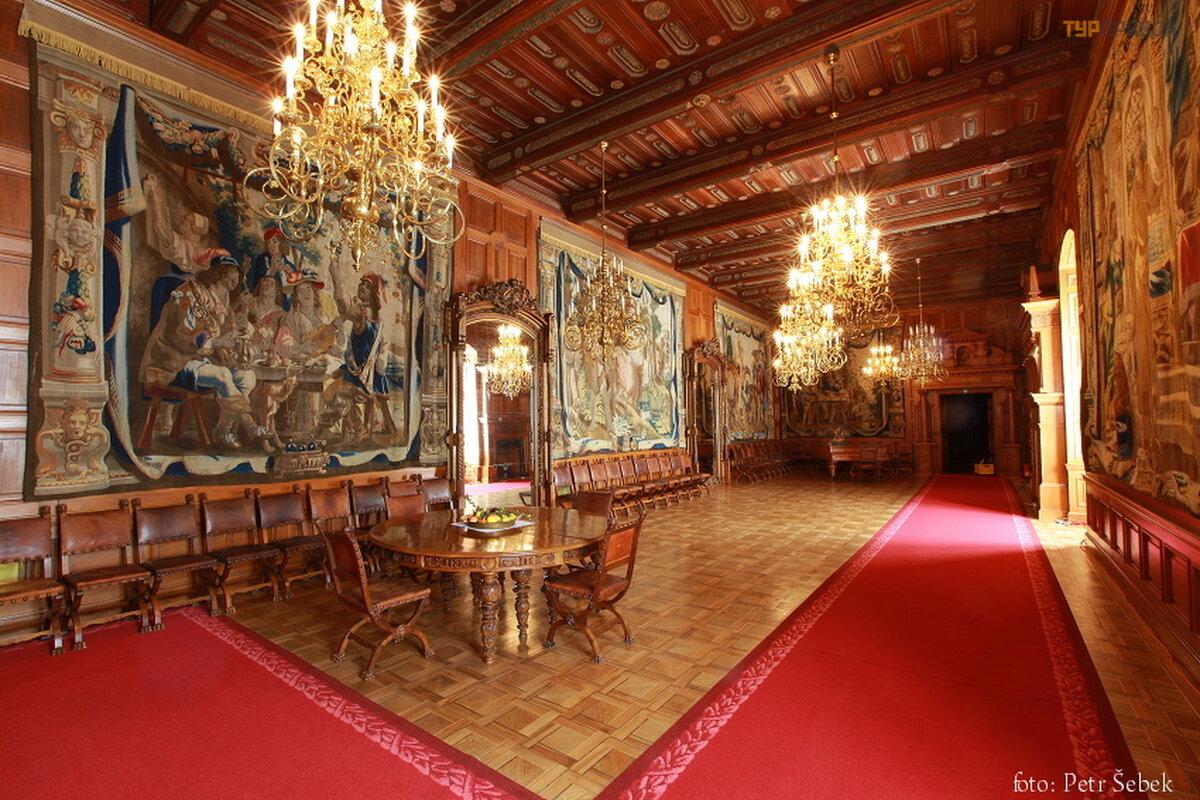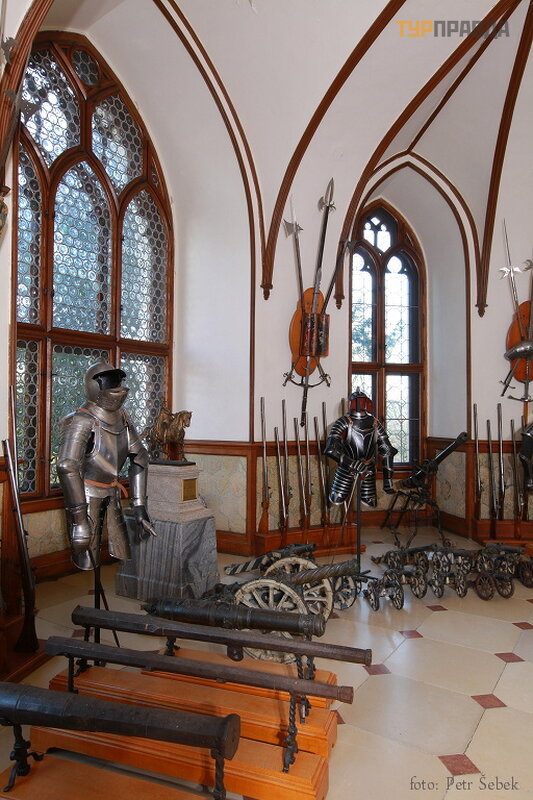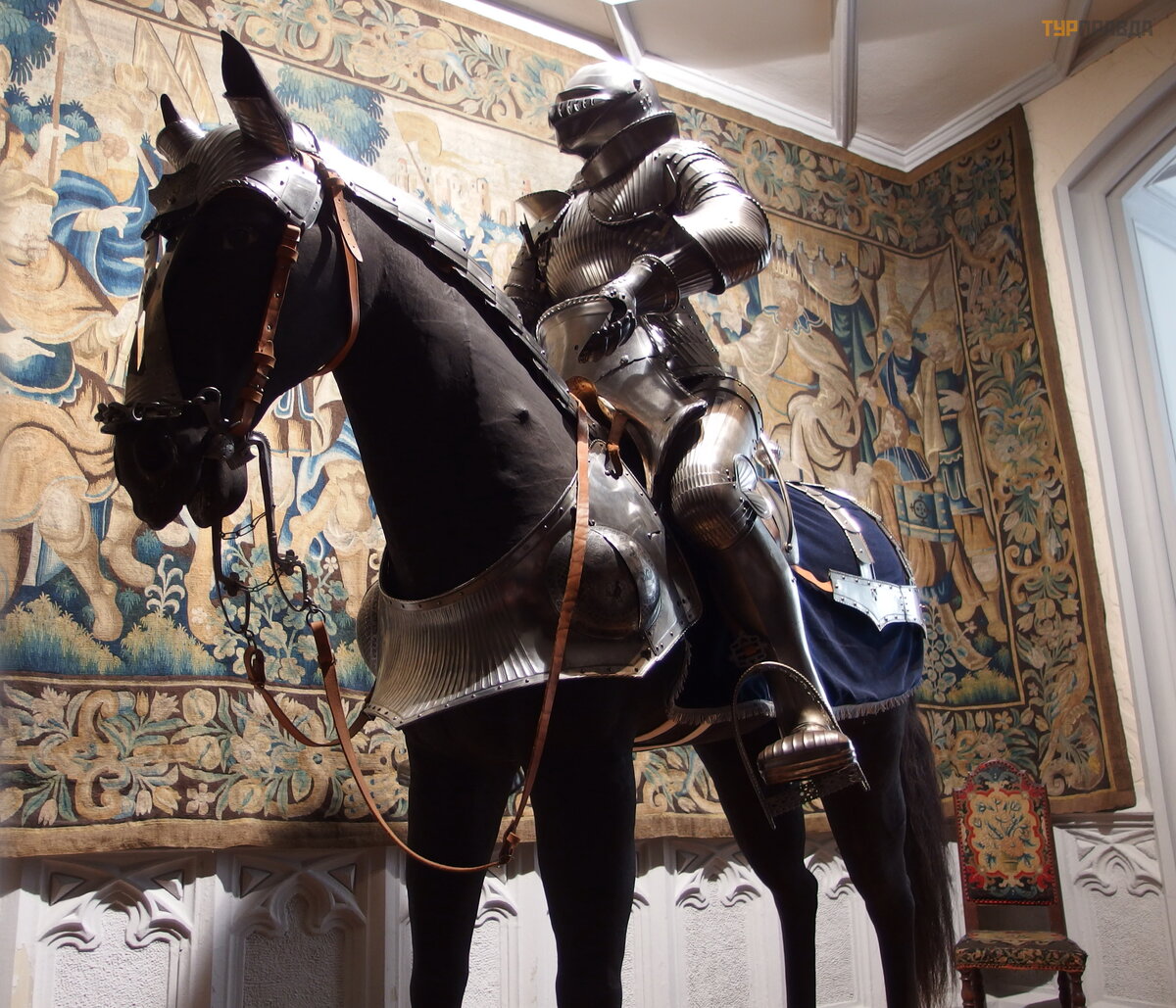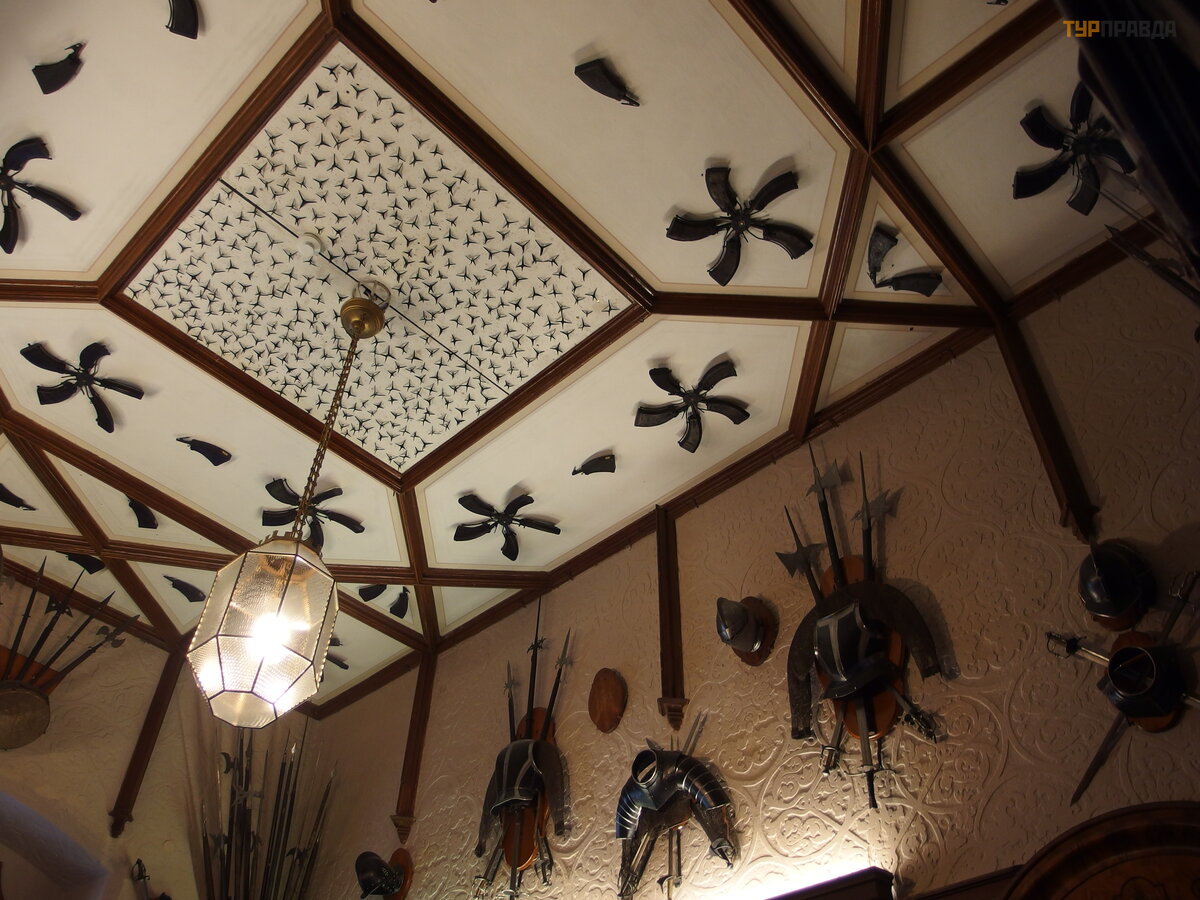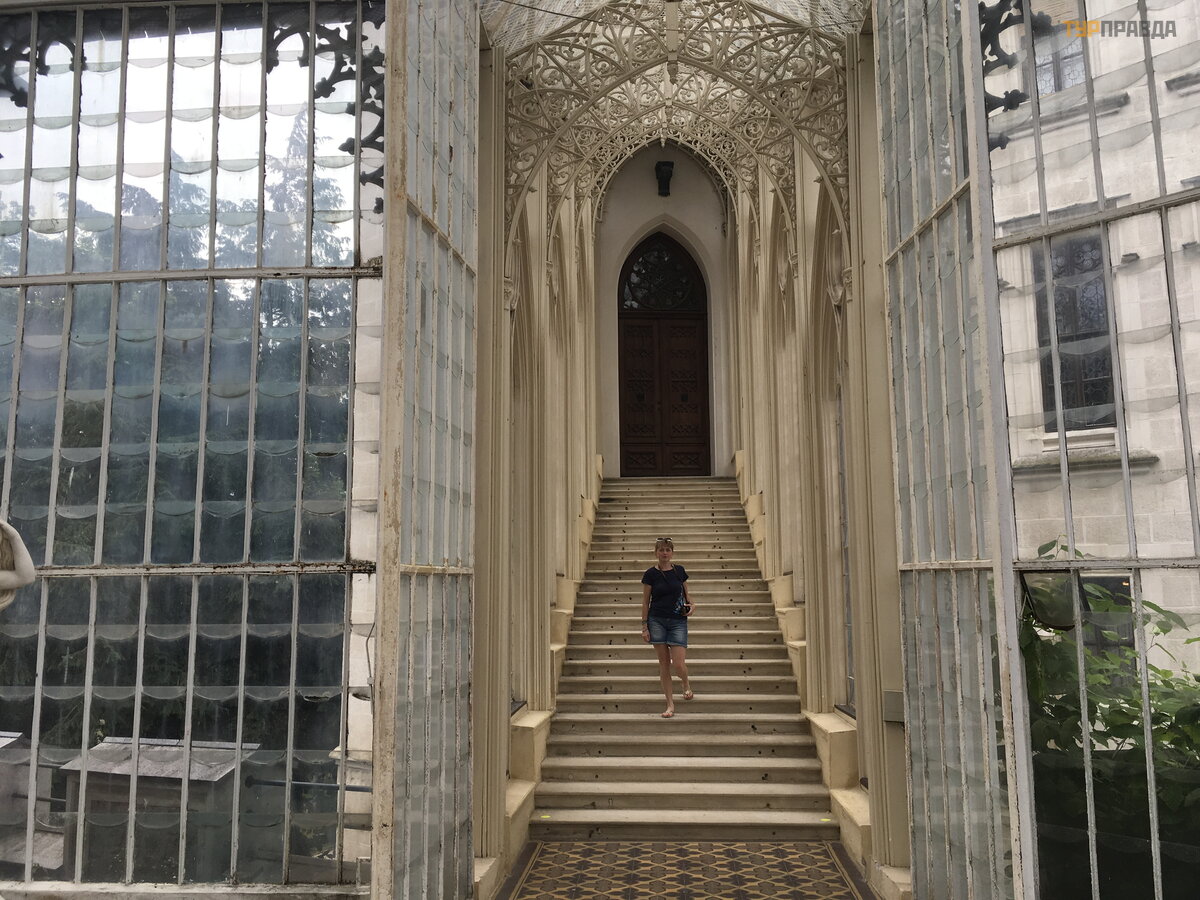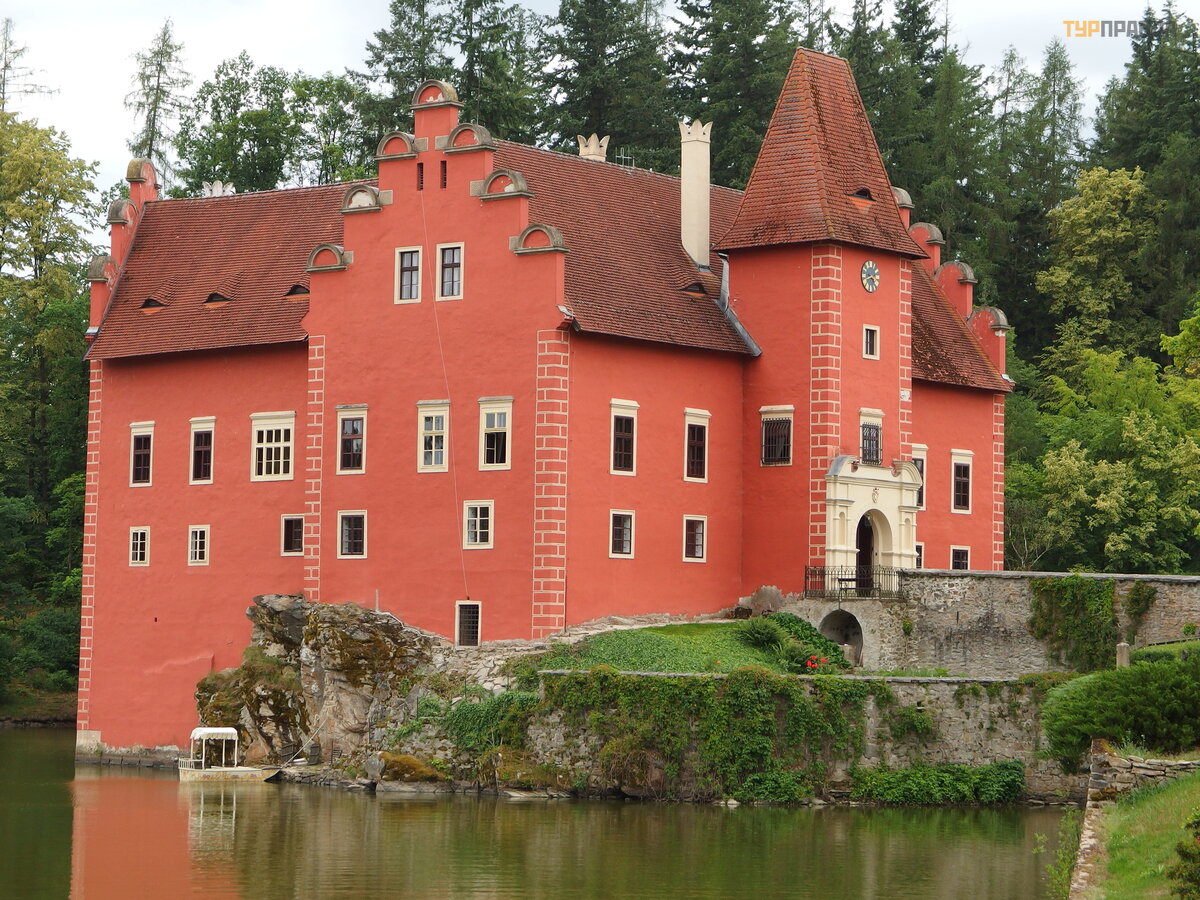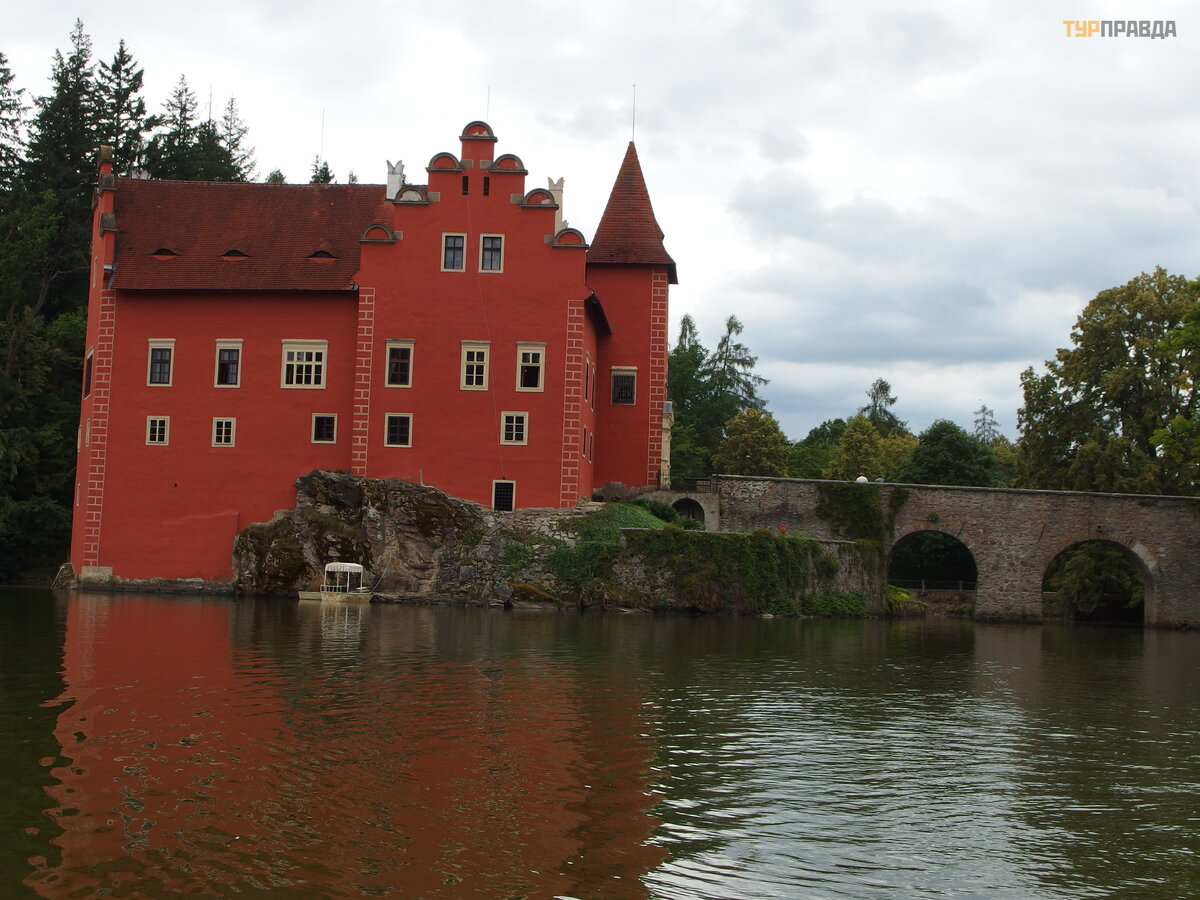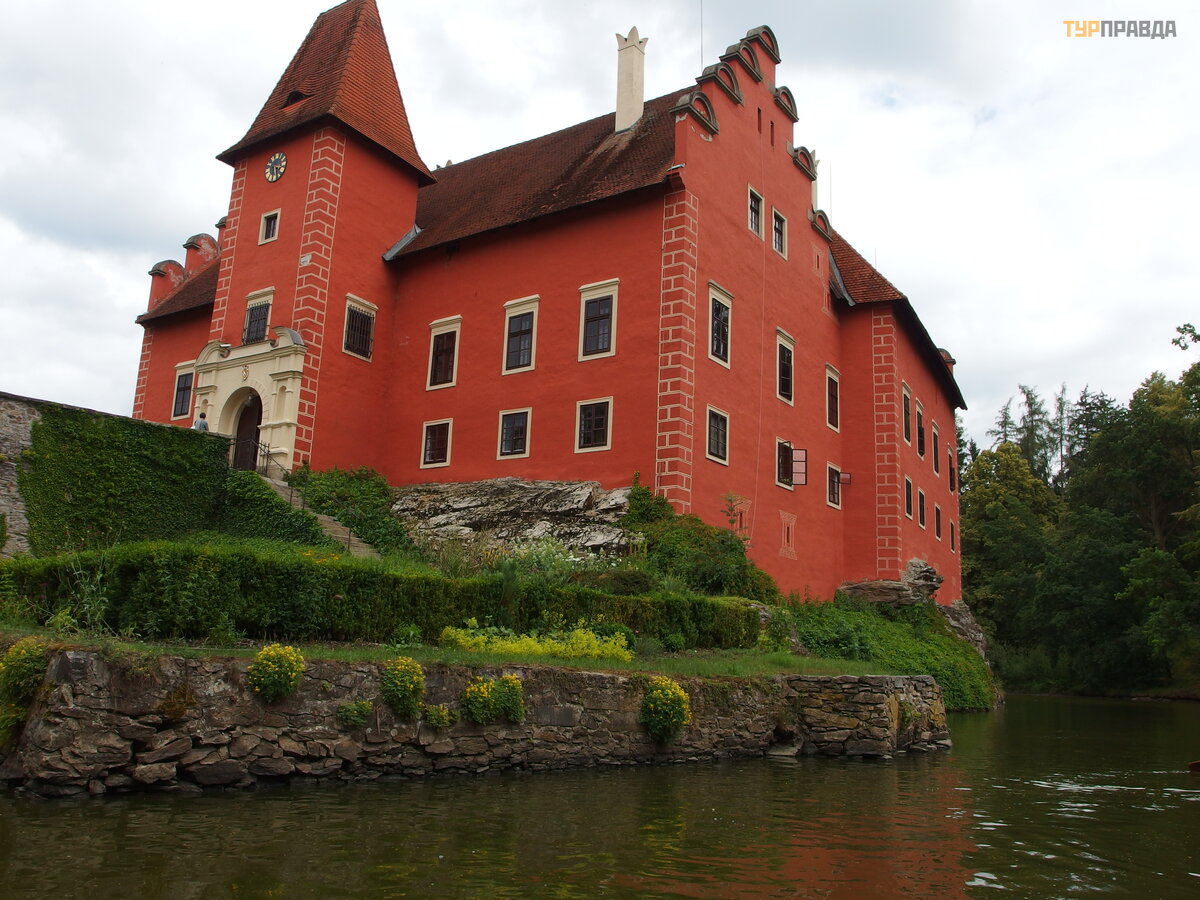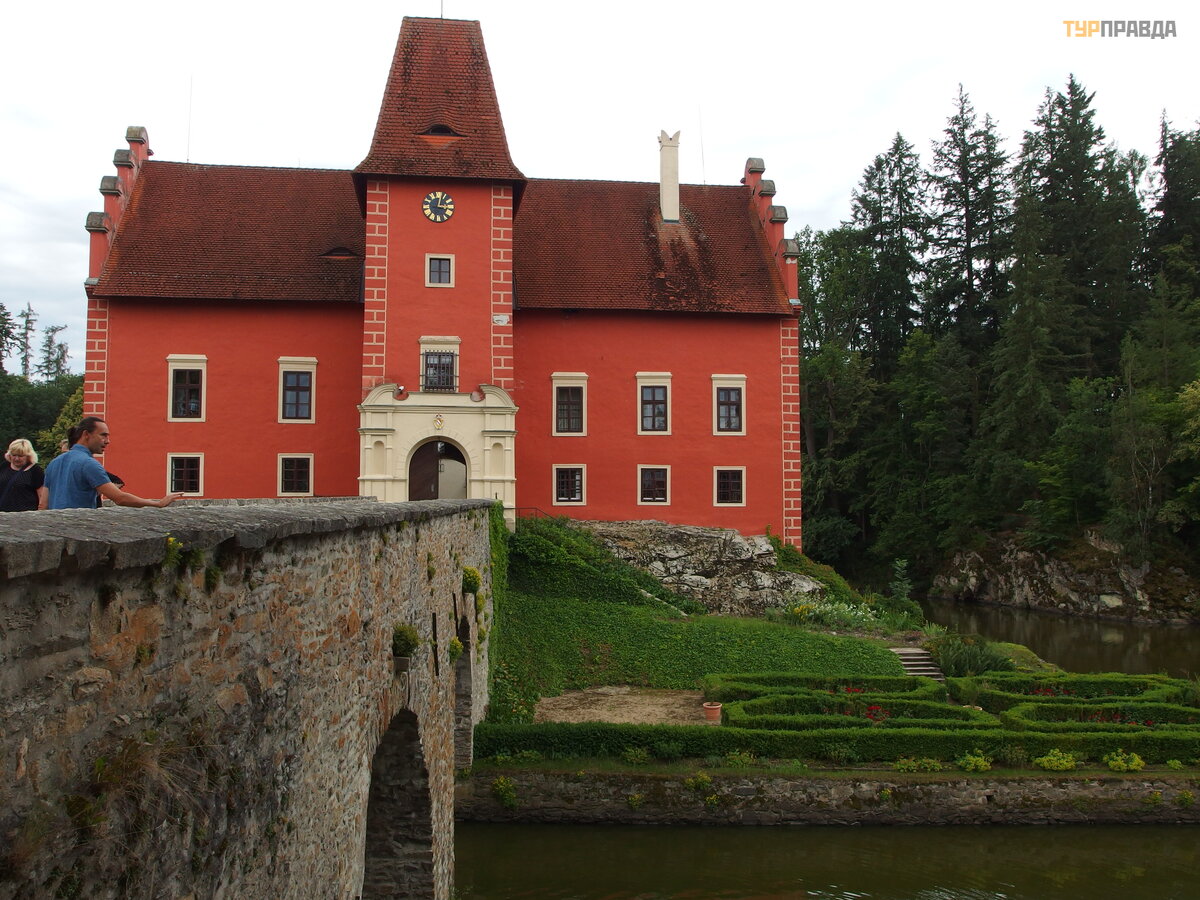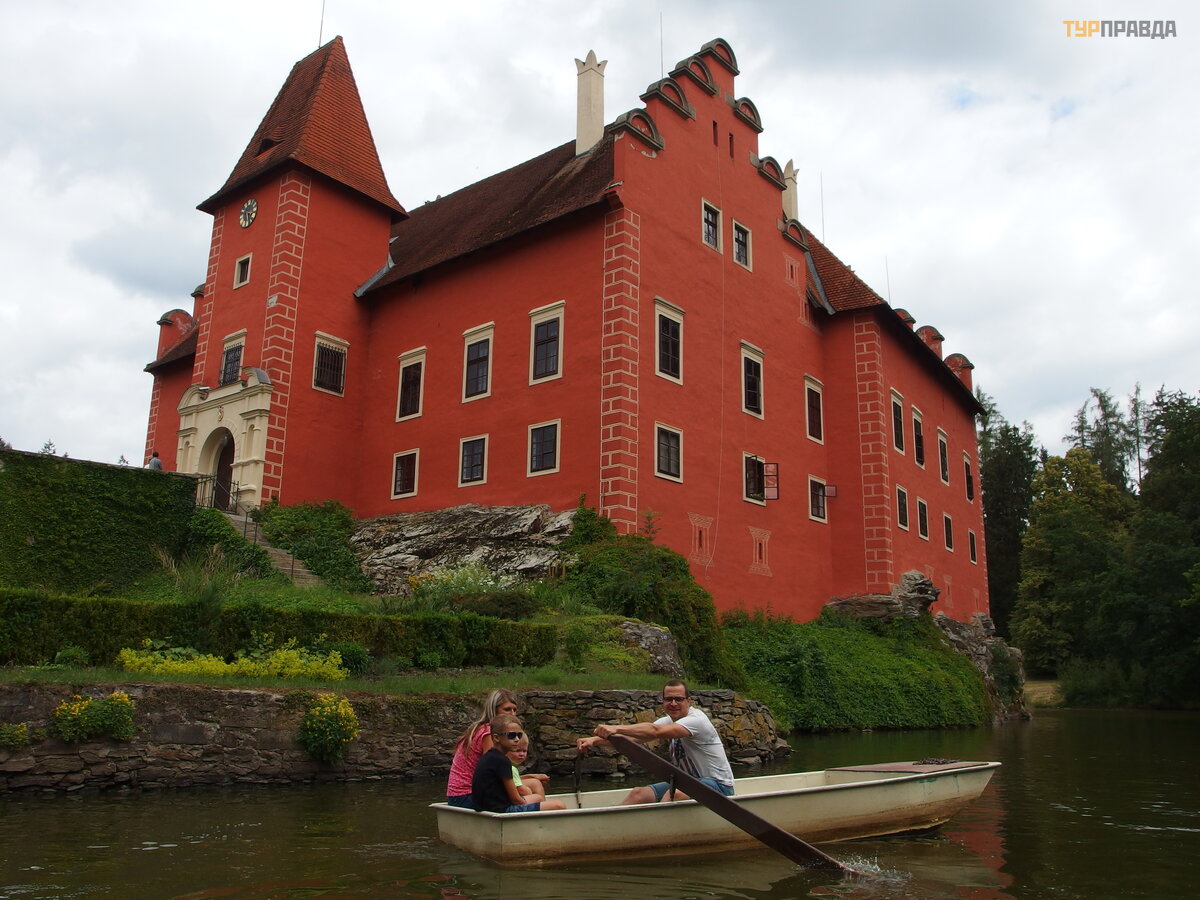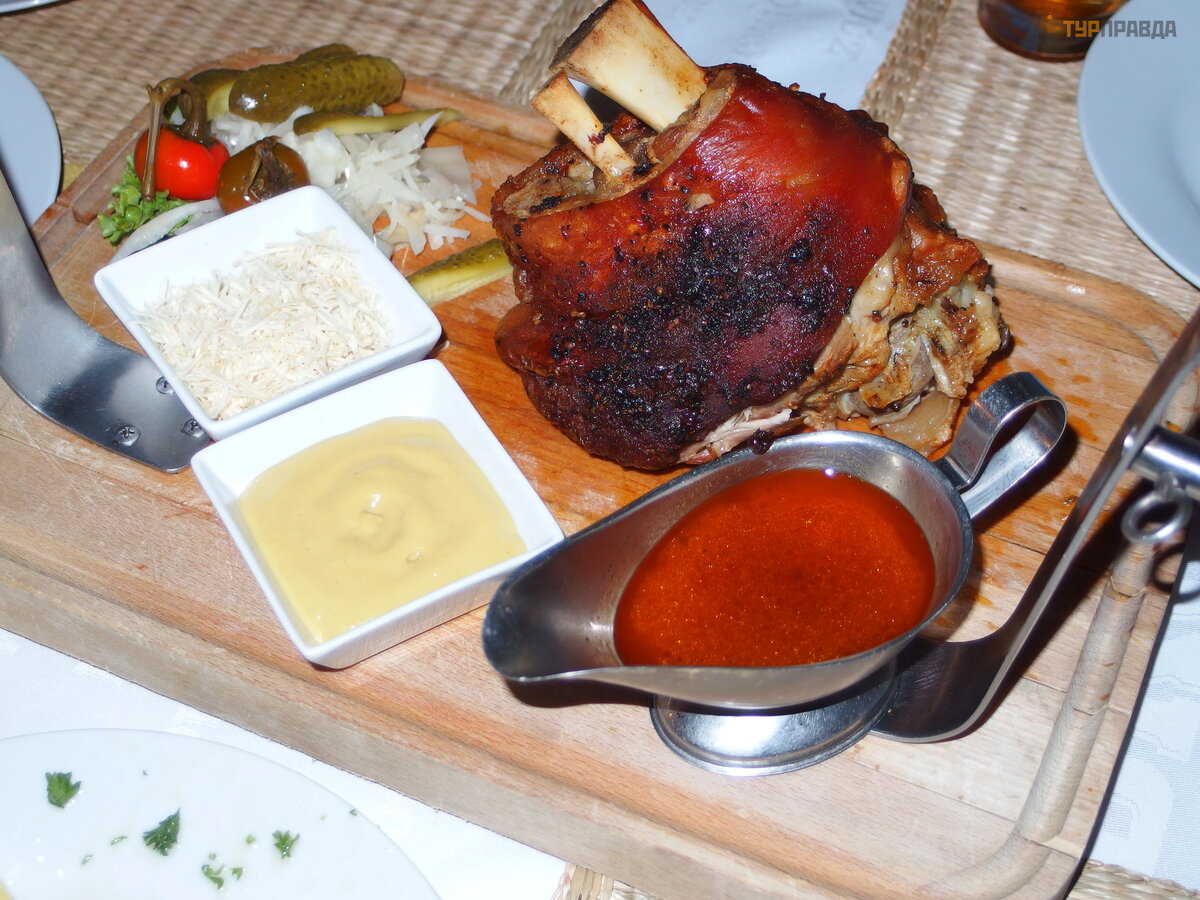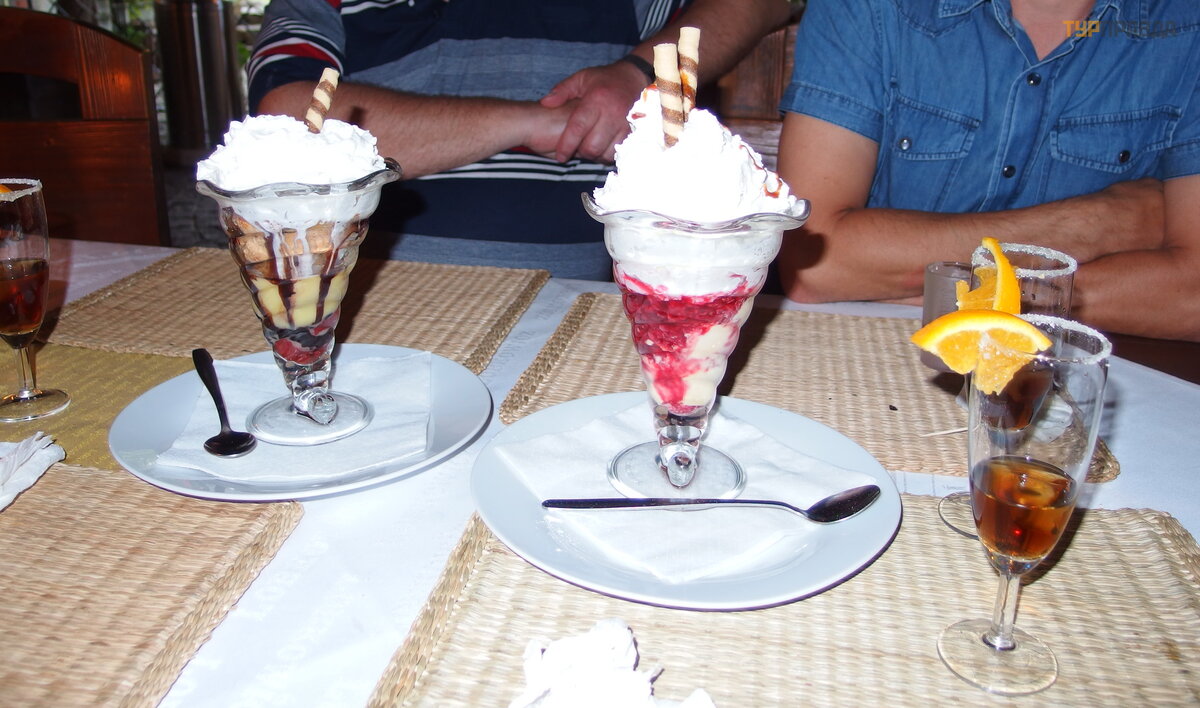Czech castles. A novel in five parts with a prologue and an epilogue.
Part 3. Two gems of South Bohemia
Prologue here https://www.turpravda.com/cz/blog-324562.html">turpravda.com/cz/blog-324562.html
Part 1 here http://https://www.turpravda.com/cz/blog-325037.html">turpravda.com/cz/blog-325037.html
Part 2 here https://www.turpravda.com/cz/blog-327067.html">turpravda.com/cz/blog-327067.html
10 km from Č eské Budě jovice, on a high cliff above the Vltava River, the castle Hluboka nad Vltavou proudly rises.
The castle was founded in the 13th century by the Czech king, and in the first written records the castle was called Frauenberg. And it was built in the Gothic style. In the first 400 years, 26 owners have changed. And like most Czech castles, it was repeatedly rebuilt in the Renaissance style, then in the Baroque style. Until in the 17th century it became the property of the richest Czech family of Schwarzenberg (they owned half of the Czech lands).
It is to the representatives of this family, Jan Adolf II and his wife, Princess Eleonore of Liechtenstein, who carried out a large-scale reconstruction of the castle and park in the 19th century, that we are grateful for today's appearance in neo-Gothic style. After they visited England, Princess Eleanor came up with the idea of creating the "Czech Windsor". And the Viennese architect Frantisek Bera brought this idea to life. The Schwarzenbergs owned the castle until 1945. In 1947, the government of the Czech Republic issued a special law, the Schwarzenberg Law, which nationalized all their property. And as you understand, there was enough property - the castles of Krumlov, Vimperk, Orlik, Trebon, Zvikov, Cimelitz and others.
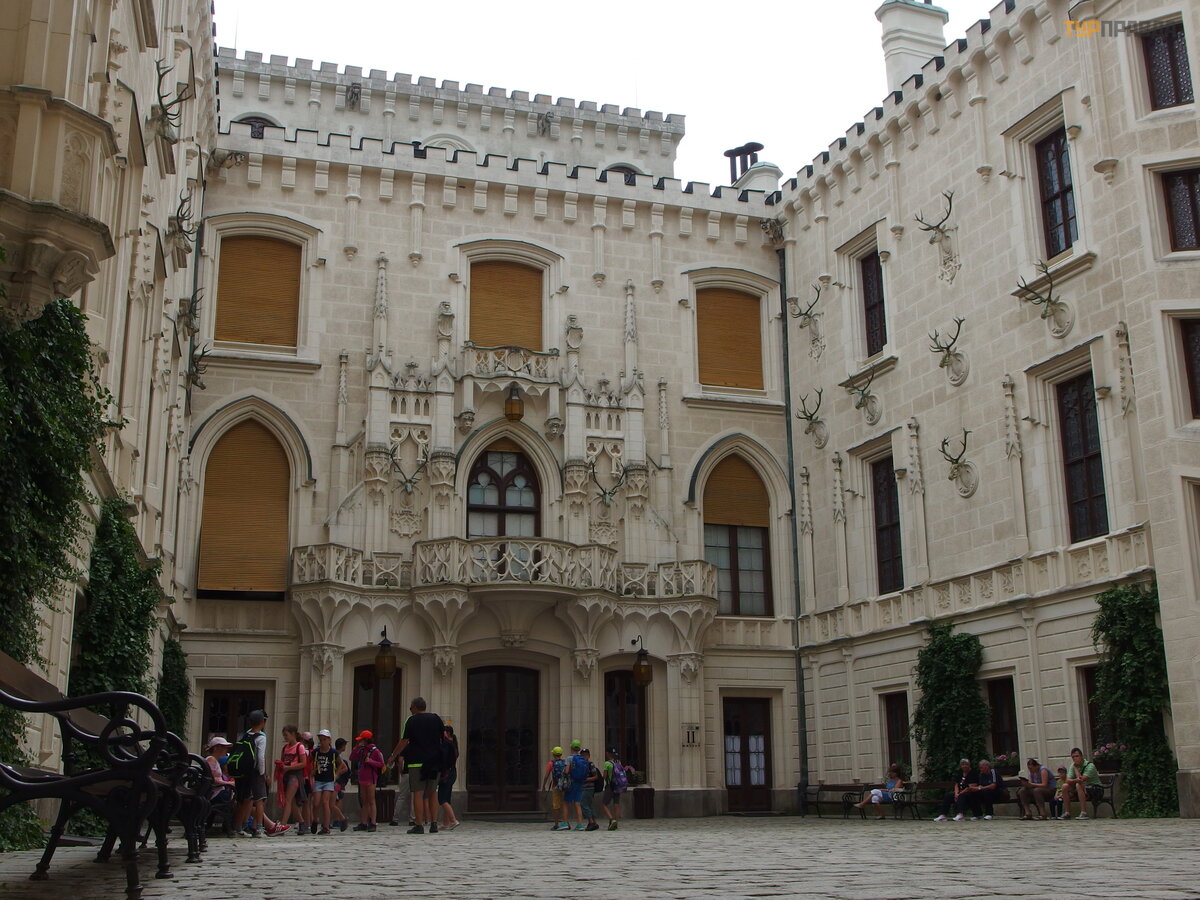 The walls of the castle both inside and outside are decorated with hunting trophies of its former owners
The walls of the castle both inside and outside are decorated with hunting trophies of its former owners
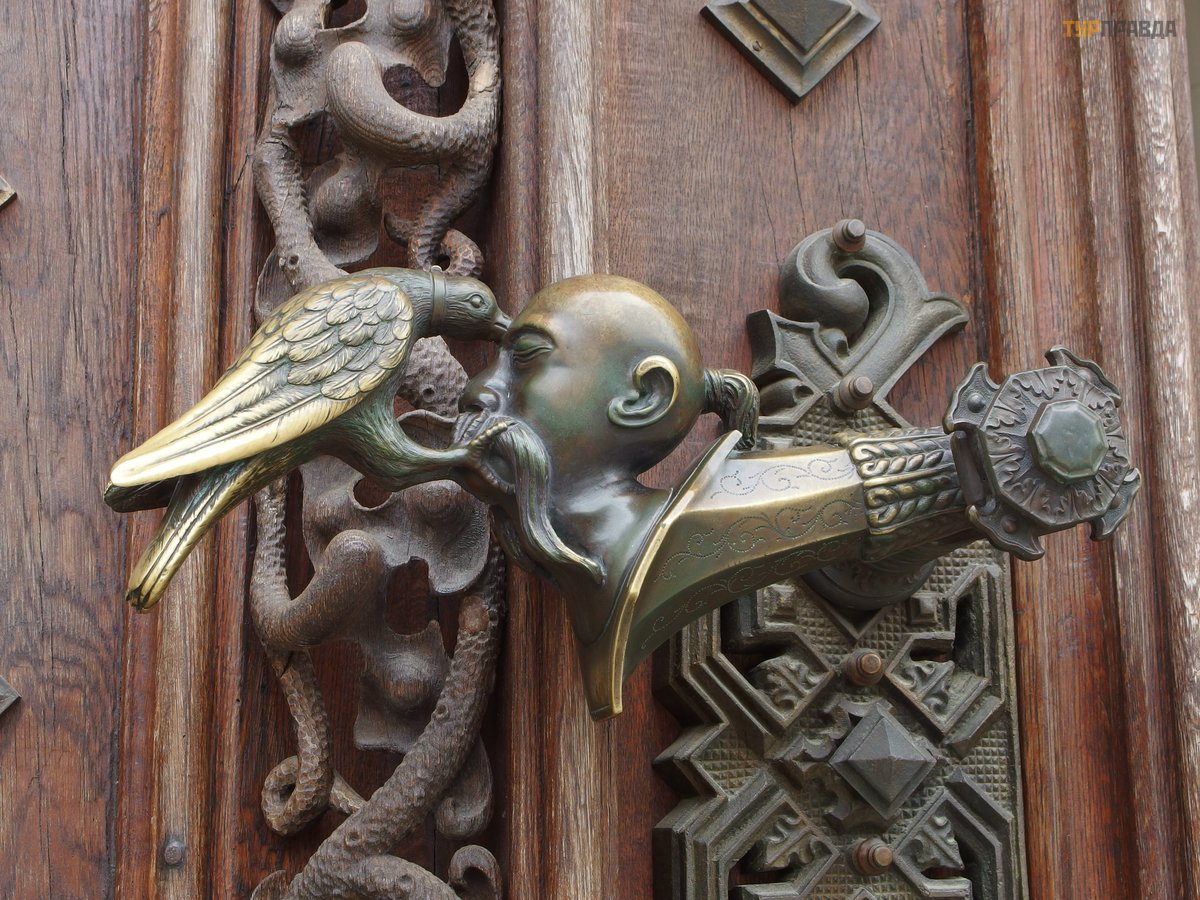 One of the ancestors of the Schwarzenberg dynasty - Adolf von Schwarzenberg, who devoted his life entirely to military service, in 1598, he took the Turkish fortress Raab (now Gyö rd) by attack in Hungary. For this victory, Adolf received the title imperial count, 40.000 gold and permission to depict on his coat of arms the severed head of a Turk, with which a raven pecks out an eye.
One of the ancestors of the Schwarzenberg dynasty - Adolf von Schwarzenberg, who devoted his life entirely to military service, in 1598, he took the Turkish fortress Raab (now Gyö rd) by attack in Hungary. For this victory, Adolf received the title imperial count, 40.000 gold and permission to depict on his coat of arms the severed head of a Turk, with which a raven pecks out an eye.
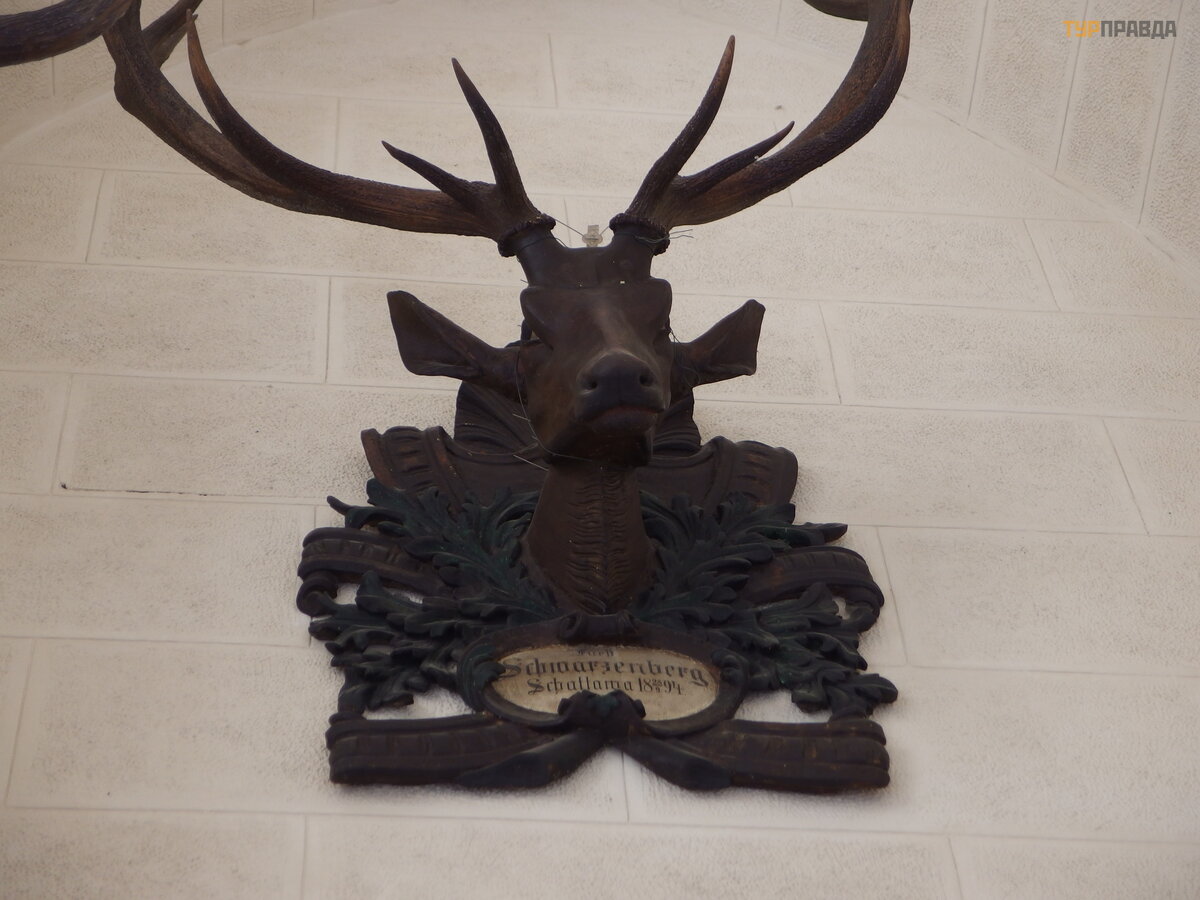 The inscription says who shot this deer and when
The inscription says who shot this deer and when
By the way, their tomb is located in the park of the Trebon castle. It was built by order of Jan Adolf and Princess Eleonora. In 2009, the granddaughter of the last prince managed to sue the tomb and the land under it from the state, and nothing more.
The castle has 140 rooms, 11 towers, 2 courtyards, a greenhouse, stables. We took a tour along the main route. But unlike Vranov nad Diji, here (there are many more tourists) they gather a group of 50 people (they also give out pieces of paper with text in Russian) and drive around the rooms (time 50 minutes). The interiors are just gorgeous. Finest wood carving. I would be very happy to walk a lot more time to see everything well. In general, the impression was twofold: the second time I would not go for such a run through the rooms (photos inside are prohibited, I inserted a couple of photos of interiors from their website, the windows are closed and dark for photos). But the interiors are impressive and worth a look.
The castle exhibits furniture from the 18th and 19th centuries, a collection of Dutch paintings from the 16th and 17th centuries, historical weapons, porcelain and glassware (from 1604), as well as old tapestries. The interiors of the castle are furnished in the style of the late period of the English Renaissance. The ceilings in the castle rooms, doors, picture frames are decorated with skillful wood carvings.
The ceiling of the hall of weapons is decorated with gunpowder horns and metal stars, which were thrown at the feet of enemy horses during battles.
The second castle that we saw that day is not as famous and pretentious as Hlyboka, but no less elegant and beautiful - the castle of Chervena Lhota (Сervena lhota). It is located 55 km from Budejovice.
The castle was built on an island in the middle of the lake, and an arcade stone bridge leads to it. And it looks like an illustration for ballads about noble knights and beautiful ladies.
The first mention of Lhota dates back to the 13th century, there was a small medieval fortress here. In the 14th century, it was bought by a Czech knight and rebuilt in a style you will be “very surprised” Renaissance (the construction work was supervised by the Italian architect Gonsa Vlach, who would doubt it). He named his new castle (with a lot of imagination : )) - Nova Lhota.
The island on which the castle is located was originally connected to the coast by an isthmus in the direction opposite to the current entrance. After the construction, the isthmus was removed, a dam was built, which raised the water level in the lake. In those days, there was a drawbridge to enter the castle. The stone bridge appeared later.
Initially, the castle was white, and no one knows why it was repainted red. But this event was overgrown with many legends, according to one of them, in the 16th century, the knight Gutram Kaba from Rybnyan was the owner of the castle, and his wife's name was Zhanna from Dirn. She was a Protestant and her husband was a Catholic. Somehow, Zhanna tried to throw an old family cross out of the window into the lake, in front of which her husband prayed. And at the moment when she leaned out of the window and threw the relic into the lake, a strong storm began, and the devil appeared. He grabbed Jeanne and dragged her through the window. She desperately resisted, but it did not help her.
After a few moments, they disappeared into the depths of the lake, and her bloody footprints remained on the wall. These footprints carried a curse, and to get rid of them, the castle was repainted red.
According to historical chronicles, the Kabe clan lived in Cervena Lhota. And there was a time of religious confrontation between the two branches of this kind, since one of them professed Catholicism, and the second - Protestantism. And, not uncommon at that time, because of these quarrels, blood was shed. The old family cross really existed and has survived to this day; it is kept in the church of St. Otton (Ottona) in the nearby village of Deshtna.
In 1945 the castle was nationalized and a children's camp was located here for several years. In 1947 the castle was awarded the attention of the National Cultural Commission, which in 1949 made the castle accessible to tourists. And there is another legend connected with these events.
The Minister of Agriculture wanted to turn the castle into a dacha. But the resourceful caretaker Antonin Vrkoch raised the dam and let the water out of the lake. Before the Prague commission appeared a medieval castle in a puddle of mud, which reached the windows of the ground floor. Looking at all this horror, representatives of the ministry, without thinking twice, abandoned their plans. Here's a story : )
Watch the inner chambers, somehow we were not tempted. After the magnificence of Hluboka, I don't think we'd be impressed. And we rented a boat and rode on the lake around the castle. Here is what I recommend.
And the last point of our plan for this day is to taste the famous "boar's knee liver". Traditions must not be broken! Every time we visit the Czech Republic, we definitely go to eat this dish.
And finally, dessert. Life, I'll tell you, was a success : ))))
Traditional Czech dessert "Horka laska" - "hot love" ice cream with raspberries and cream. And the second dessert is the same with ice cream and cream, fresh fruit, frozen cookies, and all this "disgrace" of whiskey is poured over. A compliment from the restaurant is the national tincture "Fernet stock". We were served a lighter, softer and sweeter version (for girls : ) - citrus for dessert. Traditional Fernet has a fortress of 40 degrees. and bitter-herbal taste.
Continued here https://www.turpravda.com/cz/blog-331417.html">turpravda.com/cz/blog-331417.html
